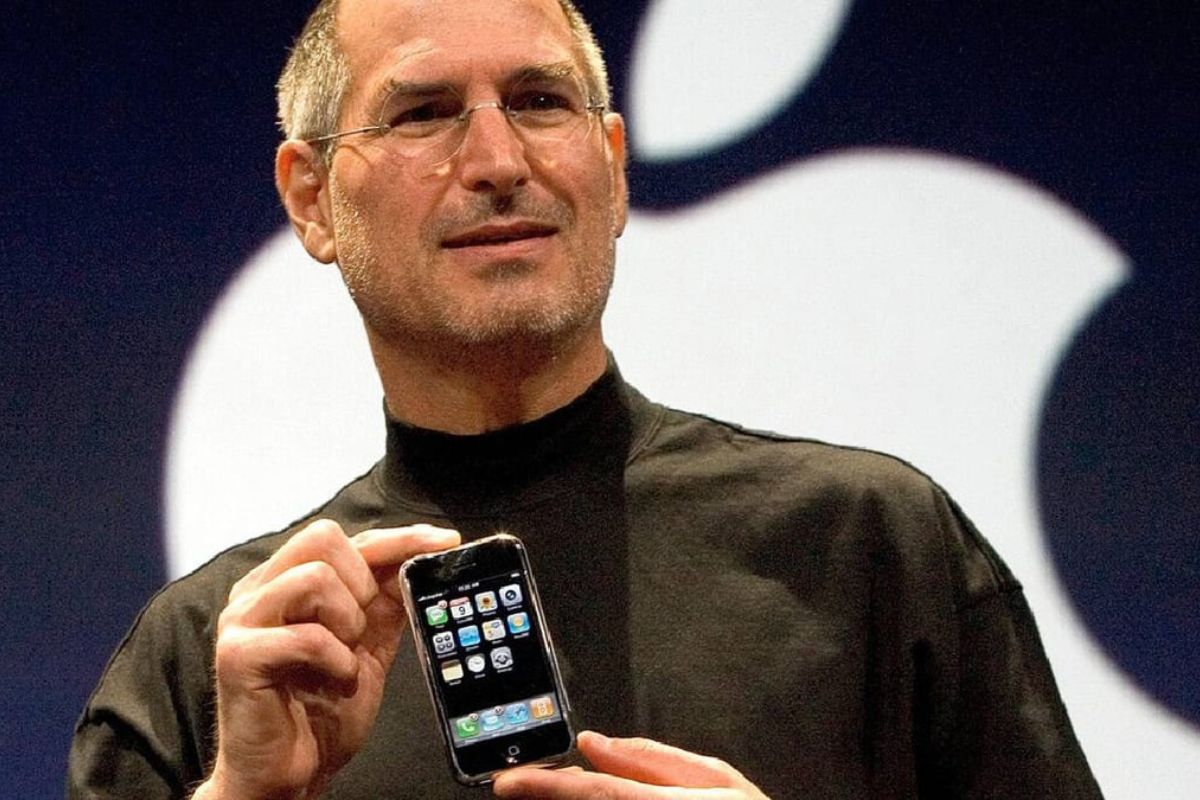Show table of content Hide table of content
In 2007, 18 years ago, Steve Jobs presented the first iPhone. A model that turned the world of mobile phones upside down! But did you know that it was barely functional?
History repeats itself at Apple, from Siri to the 2007 iPhone
At the MWC in June 2024, Apple announced with great fanfare the arrival of Apple Intelligence and a completely redesigned version of Siri, which was supposed to revolutionise our relationship with the voice assistant. The rhetoric was ambitious: Siri would finally become useful, intelligent, capable of understanding context and digging through your emails, messages, calendars or bookings to offer you appropriate responses. It was a transformation that many had been waiting a long time for, and one that we hoped would make up for lost time with the competition, who were already well advanced on the subject.
Unfortunately, the promise has not been fulfilled. With Apple Intelligence already long overdue in France, Apple ended up postponing the launch of the new version of Siri until 2026. The effect was immediate: disappointment among users, criticism on the networks and a lack of clarity about the real state of development. As a result, Apple was taken to court for false advertising. No technical details or clear justification were provided. The long-awaited future was simply postponed, and the company’s credibility took a hit.
For some analysts like John Gruber, this strategy is nothing new: Apple sometimes presents features that are not yet finalised, or even non-existent, at its conferences. And this approach goes back much further than you might think.
In fact, it’s part of a culture of technology showcasing that the company has mastered since its inception, with one emblematic example being Steve Jobs’ presentation of the very first iPhone in 2007.
The day Steve Jobs presented a barely functional iPhone
On 9 January 2007, Steve Jobs announced a revolutionary device to the world. But according to an article in New York Magazine, this mythical moment hid a very different reality: the iPhone barely worked. The software was unstable, prone to frequent bugs. Playing music or watching a video could cause the device to crash. A simple error in task chaining could force a reboot.
To avoid this risk, Apple’s engineers came up with a solution: “the golden way”. This was a perfectly sequenced scenario that Jobs had to follow to the letter. If everything was followed to the second, the iPhone would hold. If not, it would fail. Jobs also had several identical units hidden on stage. If an iPhone jammed, he could discreetly switch to the next one without anyone noticing.
Steve Jobs 20 years ago, Steve Jobs explained how to succeed in life with a simple mindset.
The staging went even further. Jobs refused to allow a camera to film the iPhone screen and broadcast it to the audience. He wanted a sharp projection, with no reflections or shaking. To achieve this, the engineers integrated custom cards and video cables that extracted the signal from the iPhone itself and sent it to the projector. It was a fragile, home-made system, but it managed to give the impression that everything was natural, almost magical.
Connectivity was another challenge. With a room full of experts, Wi-Fi was unstable. Apple modified its AirPort routers to transmit on a frequency reserved for Japan, outside the usual range in the United States. For calls, AT&T installed a dedicated mobile antenna, and the demonstration iPhones were programmed to display five network bars at all times, regardless of the actual signal quality.
And yet, against all the odds, the presentation was a triumph. Jobs gave one demonstration after another with impeccable fluidity: music, videos, web browsing, calls, messages… right up to the famous moment when, thanks to Google Maps, he located a Starbucks and ordered 4,000 coffees. The public never saw it coming. Everything seemed magical.
The level of secrecy was such that certain suppliers – such as Marvell Technologies, manufacturer of the Wi-Fi and Bluetooth chips – were still unaware on the day that their hardware would be integrated into a telephone and not an iPod. Apple went so far as to provide them with false technical drawings.
Now, with Siri’s delay, some people are wondering whether Apple isn’t replaying a familiar scenario. The difference is that in 2007, the magic worked. This time, it’s a long time coming….


